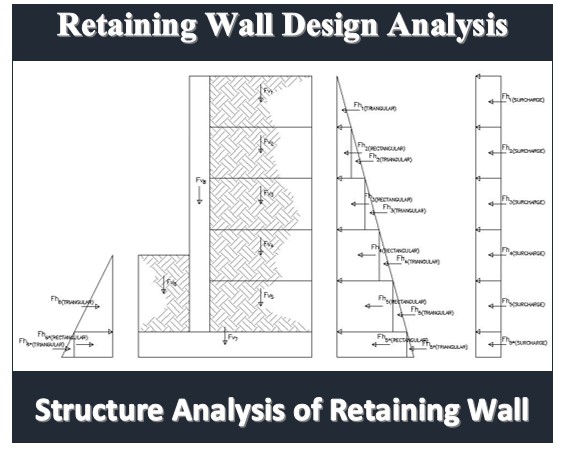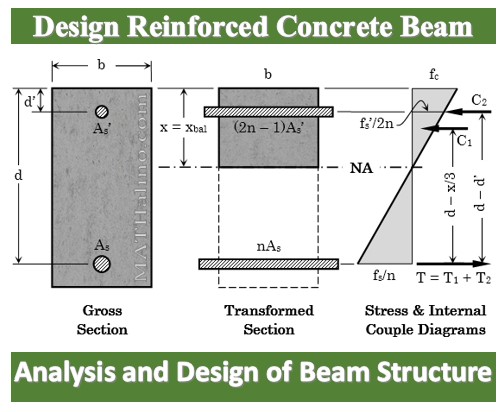Description
Designing and analyzing a retaining wall involves several steps to ensure stability, safety, and functionality. Here is a general guide to the process:
1. Site Investigation:
- Collect information about soil properties, groundwater levels, and topography.
- Identify the type of retaining wall suitable for the site conditions.
2. Retaining Wall Types:
- Gravity Walls: These rely on their mass to resist pressure from behind.
- Cantilever Walls: Use a base slab and an upright stem to resist soil pressure.
- Counterfort Walls: Similar to cantilever walls but have vertical counterforts on the backside for added support.
- Gabion Walls: Use wire baskets filled with stones.
- Reinforced Soil Walls: Combine soil reinforcement with a facing system.
3. Load Calculation:
- Determine the lateral earth pressure acting on the wall.
- Consider surcharge loads from nearby structures, water, and traffic.
- Account for water pressure behind the wall.
4. Stability Analysis:
- Check for sliding, overturning, and bearing capacity.
- Analyze global stability considering the entire wall structure.
- Perform local stability checks for key sections.
5. Retaining Wall Dimensions:
- Establish the height, base width, and overall dimensions of the wall.
- Ensure proper drainage to prevent water buildup behind the wall.
6. Materials and Construction:
- Choose appropriate materials for the wall based on site conditions and aesthetics.
- Consider drainage features and weep holes to prevent hydrostatic pressure.
7. Reinforcement Design:
- If using reinforced walls, design the reinforcement layout.
- Check for the stability and serviceability of the reinforced structure.
8. Foundation Design:
- Design the foundation to support the wall and resist settlement.
- Consider factors such as bearing capacity and settlement analysis.
9. Construction Details:
- Provide construction details, including reinforcement detailing, drainage provisions, and construction sequence.
10. Review and Approval:
- Submit the design to relevant authorities for review and approval.
- Ensure compliance with local building codes and regulations.
11. Monitoring and Maintenance:
- Implement monitoring systems if necessary.
- Establish a maintenance plan for the retaining wall.
Important Considerations:
- Soil Bearing Capacity: Ensure the soil can support the loads.
- Drainage: Proper drainage is crucial to prevent water buildup.
- Material Properties: Use suitable materials with adequate strength.
- Global and Local Stability: Check both overall and localized stability.
Always consult with a qualified geotechnical or structural engineer for site-specific design considerations and local building code compliance.








Reviews
There are no reviews yet.